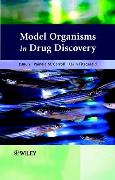Model Organisms in Drug Discovery
BücherAngebote / Angebote:
Fruit flies are "little people with wings" goes the saying in the scientific community, ever since the completion of the Human Genome Project and its revelations about the similarity amongst the genomes of different organisms. It is humbling that most signaling pathways which "define" humans are conserved in Drosophila, the common fruit fly. Feed a fruit fly caffeine and it has trouble falling asleep, feed it antihistamines and it cannot stay awake. A C. elegans worm placed on the antidepressant flouxetine has increased serotonin levels in its tiny brain. Yeast treated with chemotherapeutics stop their cell division. Removal of a single gene from a mouse or zebrafish can cause the animals to develop Alzheimer's disease or heart disease. These organisms are utilized as surrogates to investigate the function and design of complex human biological systems.
Advances in bioinformatics, proteomics, automation technologies and their application to model organism systems now occur on an industrial scale. The integration of model systems into the drug discovery process, the speed of the tools, and the in vivo validation data that these models can provide, will clearly help definition of disease biology and high-quality target validation. Enhanced target selection will lead to the more efficacious and less toxic therapeutic compounds of the future.
This book will be of interest to geneticists, bioinformaticians, pharmacologists, molecular biologists and people working in the pharmaceutical industry, particularly genomics.
Folgt in ca. 15 Arbeitstagen


